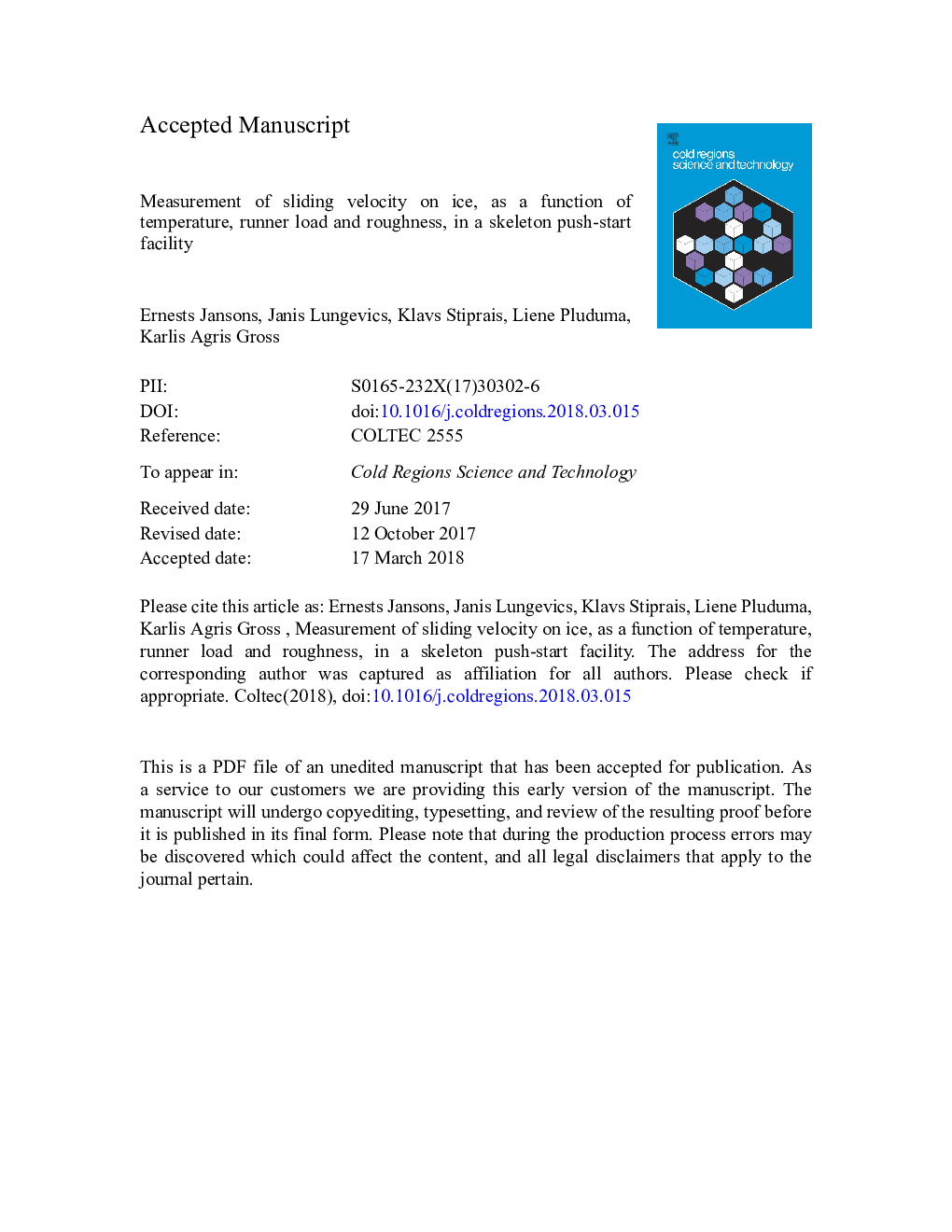| Article ID | Journal | Published Year | Pages | File Type |
|---|---|---|---|---|
| 8906488 | Cold Regions Science and Technology | 2018 | 28 Pages |
Abstract
The sliding velocity on ice, as opposed to coefficient of friction measurements, is proposed to show the effect of experimental conditions on the sliding velocity. A sled was positioned with one runner in a groove and the other on flat ice and then released to slide 25â¯m down an ice track. The sliding velocity was calculated from 20 repeat experiments using runners with a different roughness (polished vs abraded) under different loads (30â¯kg, 40â¯kg and 50â¯kg) and at a range of air temperatures (â15â¯Â°C, â10â¯Â°C, â2â¯Â°C, 0â¯Â°C and 2â¯Â°C). The error in sliding velocity was sufficiently small (0.15%) to clearly show the effect of different parameters, and allowed trends to be identified. Sliding velocity was mostly influenced by a change in temperature, then by a change in load, and then the runner roughness. The highest speed was recorded at 0â¯Â°C, when the roughness and intermediate loads played a larger effect on the sliding velocity. The results are discussed in reference to solid friction, movement over a water film, and the mechanical properties of the ice. Measuring the sliding velocity, with a controlled release mechanism on the sled obviates the operator related error, and also provides a good insight on the influence of different conditions, instead of measuring the ice friction and making predictions of the acceleration and the resulting sliding velocity.
Related Topics
Physical Sciences and Engineering
Earth and Planetary Sciences
Earth and Planetary Sciences (General)
Authors
Ernests Jansons, Janis Lungevics, Klavs Stiprais, Liene Pluduma, Karlis Agris Gross,
